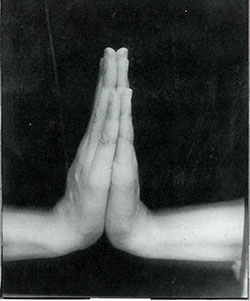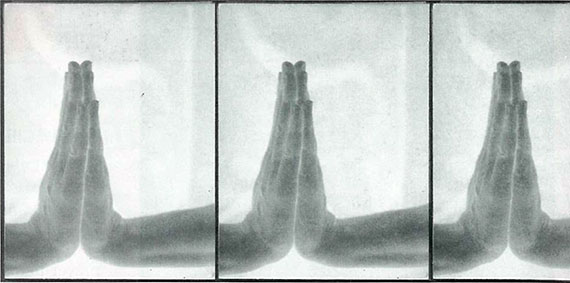In Reinventing Medicine, (HarperSanFrancisco, 1999), Dr. Larry Dossey cites several scientific studies about the effectiveness of prayer. Medical evidence now supports the view that prayer helps in the healing process, and some studies have documented positive results of Tibetan prayer as an intercessory tool. Dr. Dossey has written eight books including Healing Words: The Power of Prayer & The Practice of Medicine(HarperSanFrancisco, 1993) and is executive editor of the journal Alternative Therapies in Health and Medicine. Today Dr. Dossey lives in Santa Fe, New Mexico. He is former chief of staff at Humana Medical City Dallas and former co-chair of the Panel on Mind/Body interventions, Office of Complementary and Alternative Medicine, National Institutes of Health.
What is your definition of prayer?
Very broad: Prayer is communication with the Absolute. This invites people to define what communication means to them and the meaning of the Absolute. This could take the form of a personal god or not. This definition does not disenfranchise anyone.

When you pray, is there an object?
No. I offer my prayer to the Absolute in the most general way imaginable, which, ironically, is to me the most personal form my prayer could take.
What do you mean by Absolute?
The Absolute is undefinable, ineffable, unspecifiable, and inarticulable. If you attribute any quality to the Absolute, you by definition establish a quality that it is not. But nothing is outside the Absolute; otherwise it would not be Absolute. So when I pray to it, I don’t want to define what it is I pray to, because this defines and therefore limits the Absolute. Some things are best left untampered with.
How do you understand the efficacy of prayer without a deity?
I don’t believe that a deity as understood in the Western world is necessary for prayer to be effective. I simply pray, “May the best thing happen. May thy will be done.” Or, “May the best outcome prevail.” I don’t need to address those prayers to a God image. Most people in our culture feel otherwise, of course. I’ve had the opportunity to discuss with thousands of Americans their idea of prayer. Most people seem to believe that prayer involves talking to some sort of white male cosmic parent figure who is short-tempered and prefers to be addressed in English. For me, this is idolatry and shameless anthropomorphism.
Zen Buddhism warns against the tendency of words to conceal the true nature of enlightenment. How do you view teachings on silence versus the articulation of prayer?
The essence of prayer goes beyond articulation, beyond words. The idea of the Void is precious. That’s where the action is. I feel much more comfortable with silence. I love the comments of Father Thomas Merton, who was once asked, “How do you pray?” His response was, “I pray by breathing.” I think this suggests that the esoteric understanding of many religions honors the Void, or the Great Silence. The evidence so far shows that no particular strategy enjoys a monopoly. Virtually every mode of prayer that has been examined achieves results—highly specific forms of articulated prayer involving definite outcomes are effective, as well as entering the Void, entering silence and asking for absolutely nothing. This mocks our ideas that there is one best way to pray. I’m talking about approximately two hundred studies looking at the ability of praying people to affect various subjects, which range from human beings to animals to plants and even to microorganisms. These scientific studies have been reported in various journals over the last three decades.
In your new book you cite several studies using prayer in hospitals: Mt. Sinai, Duke, Boston’s Deaconess Hospital. Which of the recent studies on prayer has impressed you the most?
My favorite studies involve nonhumans. This is because they can be done with fanatical precision. For example, these studies involve the effect of prayer on growth rates of bacteria, growth rates of plants, and the effect of prayer on tumors in animals. Some of these studies involve specific biochemical reactions. Researchers in France and at the University of Tennessee inhibited the growth of fungi in petri dishes by using prayer from distances of as much as fifteen miles. At St. Joseph’s University in Philadelphia, people used prayer to both inhibit and stimulate growth of bacteria in test tubes over a twenty-four hour period. This is where the gold lies in the prayer studies. However, most people are obviously more interested in the effect of prayer at the human level.
In 1998, the MANTRA Study Project at Duke was conducted by Dr. Mitchell Krucoff and monitored the use of five noetic therapies, including prayer, in a double-blind study of 150 cardiology patients. Those in the prayer group showed a 50 to 100% reduction of adverse effects after angioplasty and cardiac catheterization compared to the standard therapy group without prayer. Christians, Carmelite nuns, Baptists, Moravians, Jews, and Tibetan monks prayed for these patients from distances as far away as Nepal. Why did they use different traditions, and what were the people who were praying told about who or what they were praying for?
Critics sometimes say that researchers who investigate prayer have a hidden agenda and might attempt to promote their own private religious beliefs. The MANTRA project eliminated this objection by recruiting intercessory prayer from a variety of religious groups. And this prevents any particular religion from claiming credit. The names of people in the prayed-for group were given to the Carmelite Sisters of Baltimore and were e-mailed or phoned to Buddhist monks in Kopan Monastery, Nepal, and to Nalanda Monastery in France. At the Buddhist monasteries, participants followed instructions from Lama Zopa Rinpoche and performed Medicine Buddha ceremonies by name for each patient. The patient’s name was also entered on the Virtual Jerusalem Web site where its staff members actually inserted written prayers for the patients in cracks in the Western Wall in Jerusalem. Then the patient’s name was forwarded to Silent Unity, which is an interdenominational Christian prayer group in Missouri, as well as to Baptist, Moravian, and Church of Abundant Life congregations in North Carolina. All these groups prayed for the patients collectively, at the frequency and duration that is customary for each of them. This way, the experimenters cannot be accused of fronting for any particular religion.
According to the study, the patients did not know that they were being prayed for. What do you think was the key element that made the prayers effective?
In my opinion the central role of love and compassion is the overpoweringly important factor underlying success of prayer in general, and in that study.
In Glenn Mullin’s piece on prayer, he says: “Prayer in Buddhism . . . only becomes a Buddhist practice when it is coupled with the awareness of the void nature of the three circles: the person praying, the prayer itself, and the act of praying.” How do you respond to the understanding that there is no inherent value or status?
I agree one thousand percent. Even if someone analyzed Buddhist prayer differently, we still would be stuck with the outcome of the studies which show quite simply that Buddhist prayer has an effect. So regardless of how we slice and dice Buddhist prayer, evidence shows that it is effective.
What is your view of where prayers are directed?
I believe that consciousness, in general, and prayer, in particular, is nonlocal—that the mind is not localized or confined to the body but extends outside it. This implies that consciousness and prayer are infinite in space and time. If something is infinite in space, this means it is omnipresent. This implies that prayers go nowhere, because being omnipresent they’re already there. The same analogy applies to time. If something is nonlocal in time, it is present everywhere in time and is therefore timeless and eternal. There is no directionality to prayer, therefore, either in space or time. This obviously conflicts with the ordinary Western view of prayer as being sent to the Divine and deflected from the Divine to the object of the prayer. Therefore, we can say that Western styles of prayer tend to be highly local whereas Buddhist prayer is nonlocal.
In your book you say that you frequently ask laypeople why they pray. Why do you pray?
It’s my nature. There’s a Chinese saying, “A bird does not sing because it’s looking for an answer. It sings because it has a song.” When I pray, I’m just singing my song.
Thank you for subscribing to Tricycle! As a nonprofit, we depend on readers like you to keep Buddhist teachings and practices widely available.